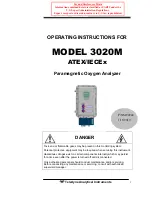
3.4.3 Secondary Processing
The measured spectrum is stored in internal memory. Several kinds of
computational processing can be performed for the stored spectrum. The following
explains these secondary-processing operations.
Note: The second processing is effective only for the spectral data measured last. For the
overlaid spectral attained through repetitive scanning, only the spectral data measured in
last cycle can be handled in the secondary processing.
(a) Trace
The Trace processing function allows the user to read out values of the on-screen
spectrum by means of the crosshair “+” cursor. On completion of measurement,
press <1> on the keyboard and then the trace screen appears as shown below.
11/08/02
16:44
600.0
nm
0.854
ABS
Wavelength Scan
3.000
ABS
-3.000
190
1100.0
Select Function:_
Trace:
nm
500.0
ABS
0.043
When the crosshair (+) cursor appears on the spectral graph, it can be moved
left/right using the arrow keys. The wavelength range that the cursor moved each
time is according to Wavelength Range on Interval. Holding the arrow key down
causes this cursor to move quickly. The wavelength and photometric value pointed
by the cursor are read out and indicated at the bottom of screen.
(b) Peaks
The Peaks processing function allows the user to detect spectral peaks. On
completion of measurement, press <2> and then the peaks screen is presented
as shown below.
3-29
















































